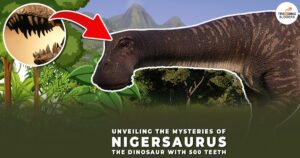Which Dinosaur Can Defeat T Rex
In the prehistoric kingdom, the Tyrannosaurus Rex stands as the undisputed emperor, its thunderous roar echoing through the eons. Yet, whispers among the fossilized remains suggest that other titans might challenge its reign.
The Spinosaurus, with its sail-like spine, and the armored Ankylosaurus, a living tank, are but two contenders in this ancient arena. Each giant possesses unique abilities that could potentially topple the T. rex's throne.
As we journey back in time, one must wonder which of these behemoths could emerge victorious in a clash of prehistoric titans, igniting a debate that transcends the boundaries of time.
Key Takeaways
- Spinosaurus, with its aquatic adaptations, could outmaneuver T. rex in water-based confrontations.
- Triceratops' formidable horns and robust frill offer effective defense and offense against T. rex.
- Sauropods' massive size and muscular tails could pose a significant challenge to T. rex.
- Pack hunting strategies of Albertosaurus could overwhelm T. rex through coordinated attacks.
The Mighty Spinosaurus
Among the few contenders capable of challenging the Tyrannosaurus rex, the Spinosaurus stands out due to its unique physiological adaptations. This formidable predator, hailing from the Cretaceous period, exhibits several features that not only distinguish it from its contemporaries but also provide it with a unique set of advantages.
Its elongated skull, similar to that of modern crocodilians, equipped with conical teeth, was ideal for catching fish, suggesting a semi-aquatic lifestyle. Furthermore, the distinctive sail on its back, supported by long spinal extensions, might've been used for thermoregulation or mating displays, indicating a complex behavior.
The Spinosaurus's adaptations for an aquatic environment could have given it a strategic advantage in certain habitats, making it one of the few dinosaurs capable of posing a significant challenge to the terrestrial dominance of the T. rex.
Triceratops: The Horned Warrior
The Triceratops, renowned for its formidable horned skull and robust neck frill, presents a unique defensive architecture among Cretaceous herbivores. These features not only served as protective structures against predators but also facilitated aggressive interactions with adversaries, including the mighty T. rex.
Analyses of fossil evidence suggest that Triceratops could have engaged in direct combat with T. rex, using its horns and bulk as effective weapons in defense and possibly offense.
Triceratops Defense Mechanisms
Triceratops utilized its formidable horns and shield-like frill as primary defense mechanisms against predators, including the mighty T. rex. These horns, often extending over one meter in length, weren't merely for display. Paleontological evidence suggests they were robust, capable of withstanding significant force, and sharp enough to inflict serious damage.
The frill, a large bony plate that extended from the skull, provided additional protection for the neck and upper body, areas particularly vulnerable to attack. This adaptation was crucial in deterring predators. The frill's thickness varied across specimens, indicating potential variation in defensive strategy or evolutionary adaptation over time.
Collectively, these features made Triceratops a formidable opponent, well-equipped to defend itself in the harsh Cretaceous environment.
Combat Against T Rex
In confrontations with T. rex, Triceratops's formidable horns and frill weren't just defensive features but strategic offensive weapons as well. These attributes allowed Triceratops to engage in direct combat effectively.
The horns, positioned above its nose and eyes, could inflict severe injuries on a T. rex attempting a frontal attack. Meanwhile, the large frill protected its neck and shoulders from bites.
Scholars suggest that the Triceratops's stance during combat was crucial; it likely charged at its predator, using its horns as spears. This tactic not only deterred T. rex but potentially caused fatal wounds.
Such confrontations underscore the evolutionary arms race between predator and prey, highlighting Triceratops's adaptations for survival in a hostile Cretaceous environment.
The Armored Ankylosaurus
Turning our attention to the Ankylosaurus, its formidable defensive armor presents a unique challenge to the predatory capabilities of the T Rex.
The intricate osteoderms that sheathe its body not only offer unparalleled protection but also serve as a deterrent against most carnivorous threats.
Additionally, its tail, evolved into a massive club, provides a potent weapon, suggesting a highly effective defense-offense mechanism in confrontations with predators.
Ankylosaurus Defensive Armor
Ankylosaurus, renowned for its formidable defensive armor, presented a unique challenge to predators like the T. rex due to its heavily fortified body and tail club. This dinosaur's armor consisted of large osteoderms or bony plates embedded in its skin, covering much of its body. These osteoderms varied in size and shape, creating an almost impenetrable shield over the Ankylosaurus's back, sides, and even eyelids, offering it near-complete protection from the formidable bite force of predators.
Additionally, the Ankylosaurus's skin likely featured keratinous material, adding another layer of toughness. This sophisticated defense mechanism not only deterred attackers but also required them to expend significant energy and strategy to find any vulnerability, often making the Ankylosaurus an unfavorable target despite its herbivorous nature.
Tail Club Weaponry
Beyond its nearly impenetrable armor, the Ankylosaurus wielded a formidable tail club that served as both a deterrent and a weapon against predators like the T. rex. This unique adaptation, consisting of large osteoderms fused together, functioned as an extension of the dinosaur's skeletal system.
Its tail club could deliver powerful blows, capable of breaking bones or causing severe injury to a predator. The effectiveness of this weapon lies not just in its strength but also in its precision. Ankylosaurus's tail was highly flexible, allowing it to swing its club with remarkable accuracy.
This defensive mechanism significantly reduced the likelihood of successful attacks from large carnivores, positioning the Ankylosaurus as one of the few dinosaurs capable of withstanding encounters with the formidable Tyrannosaurus rex.
Gigantic Giganotosaurus
How does the Giganotosaurus, a colossal predator from the Cretaceous period, measure up against the fearsome Tyrannosaurus Rex? This comparison invites a detailed analysis of their physical and predatory capabilities.
Here are key aspects to consider:
- Size and Strength: Giganotosaurus, slightly larger than T. Rex, boasted formidable strength. Its estimated length of up to 43 feet surpasses that of T. Rex, which could reach about 40 feet. This size advantage potentially provided Giganotosaurus with superior physical prowess.
- Bite Force: Despite its size, Giganotosaurus's bite force was likely weaker than T. Rex's, whose bite could exert immense pressure, crucial for penetrating armor-like skin.
- Hunting Strategy: Giganotosaurus might've hunted in packs, unlike the solitary T. Rex, suggesting a strategic advantage in taking down large prey or defending territory.
Allosaurus: The Jurassic Predator
Turning our focus to the Jurassic period, we encounter the Allosaurus, a formidable predator whose comparison with the T. Rex offers intriguing insights into their hunting capabilities and physical attributes. While both are apex predators of their respective eras, Allosaurus's anatomy suggests a more agile lifestyle, potentially giving it an edge in maneuverability. Its skull, lighter and equipped with dozens of sharp, serrated teeth, indicates a preference for quick, slashing attacks.
Unlike the robust and powerful bite of the T. Rex, Allosaurus might've relied on its ability to inflict multiple wounds on its prey, suggesting a different yet effective approach to hunting. This distinction in predatory strategies highlights the evolutionary adaptability and diversity among theropod dinosaurs, underscoring the complexity of ancient ecosystems.
The Dueling Stegosaurus
Turning attention to the Stegosaurus, its unique defensive mechanisms present a formidable challenge to the T. rex. Comparative analysis of size and strength reveals that the Stegosaurus, with its spiked tail and armored plates, could potentially leverage these features to withstand attacks.
This discussion aims to evaluate the effectiveness of these strategies in a hypothetical confrontation with the Tyrannosaurus rex.
Stegosaurus Defensive Tactics
In the late Jurassic period, the Stegosaurus developed formidable defensive tactics to counter predators, notably employing its spiked tail with precision and force. This adaptation allowed it to fend off threats effectively, showcasing the evolutionary prowess of this herbivorous dinosaur.
Here are key components of its defense strategy:
- Tail Strikes: It wielded its tail, armed with four sharp spikes, to deliver powerful blows to approaching predators.
- Spatial Awareness: The Stegosaurus maintained a keen sense of its surroundings, positioning itself to utilize its tail spikes optimally.
- Protective Posturing: It adopted specific stances to minimize vulnerable areas, ensuring its spiked tail was always a threat to predators.
This strategic approach to defense underscores the Stegosaurus's adaptability and resilience in the face of predation, marking it as a formidable opponent in its prehistoric ecosystem.
Size and Strength Comparison
When comparing the size and strength of Stegosaurus individuals, it's crucial to examine the variation within this species to understand the dynamics of their confrontations. Stegosaurus, renowned for its armored plates and spiked tail, exhibits significant intraspecific variation, impacting its combat capabilities.
Larger individuals, potentially reaching up to 9 meters in length and weighing around 5,000 kilograms, would possess a distinct advantage in physical confrontations due to their increased mass and the force they could generate with their tail spikes.
Conversely, smaller individuals, while perhaps more agile, might lack the sheer force necessary to effectively defend against or challenge a predator like T. rex. This size-strength dynamic plays a pivotal role in the survival strategies of Stegosaurus, influencing both its defensive and offensive tactics in the ancient ecosystems it inhabited.
The Swift Utahraptor
The swift Utahraptor, known for its remarkable speed and agility, poses a formidable challenge to the T. rex due to its strategic hunting advantages. Unlike the T. rex, the Utahraptor's design favors quick, decisive strikes over brute force. This distinction could tilt the balance in its favor in hypothetical confrontations. Here are three key factors:
- Speed and Maneuverability: The Utahraptor could exploit its agility to outmaneuver the significantly larger and less agile T. rex.
- Tactical Hunting Approach: Operating in packs, Utahraptors could coordinate attacks, overwhelming their prey from multiple angles.
- Armed with Deadly Claws: The Utahraptor's large, sickle-shaped claws were perfect for inflicting lethal blows to vital areas, compensating for its smaller size.
These characteristics suggest the Utahraptor could employ hit-and-run tactics effectively against a T. rex, leveraging its speed, teamwork, and weaponry.
Carnotaurus: The Flesh Eater
Shifting focus to another formidable predator, Carnotaurus, known as the 'flesh eater,' presents its own unique set of advantages in a hypothetical confrontation with T. rex.
Characterized by its distinctively large horns and an exceptionally streamlined body, Carnotaurus boasts a build optimized for speed and agility, factors that could potentially outmaneuver the more robust T. rex. Its skull, designed to deliver powerful bites, suggests that Carnotaurus could inflict significant damage in a fight.
However, its shorter arms, even when compared to T. rex, might limit its ability to grapple with opponents.
The debate hinges on whether Carnotaurus' speed and striking power could effectively counteract T. rex's brute force and larger bite force, making this matchup a subject of intrigue amongst paleontologists.
The Massive Mapusaurus
Turning our attention to the massive Mapusaurus, it's critical to examine its unique advantages over the Tyrannosaurus Rex, particularly in terms of hunting strategy, size, and predatory features.
Analysis reveals that Mapusaurus' potential group hunting behavior could have provided a significant edge in overpowering prey, contrasting sharply with the T-Rex's solitary hunting methods.
Moreover, when comparing size and dominant predatory characteristics, Mapusaurus presents a formidable challenge to the T-Rex's supremacy, suggesting a possible apex predator rivalry in their respective eras.
Mapusaurus Group Hunting Strategy
Mapusaurus, a colossal predator, may have employed group hunting strategies to overpower prey significantly larger than themselves, a behavior that challenges the traditional view of solitary dinosaur hunting. This collaborative approach underscores the complexity of their social structure and tactical acumen. The evidence suggesting such cooperative behavior includes:
- Fossil Discoveries: Sites with multiple Mapusaurus individuals suggest they lived and possibly hunted together.
- Prey Size: The sheer size of their likely prey, such as the enormous sauropods, implies a need for a coordinated attack strategy.
- Comparative Behavior: Modern predators that hunt in packs, like wolves, offer a contemporary parallel that supports the plausibility of Mapusaurus engaging in similar tactics.
This analysis not only expands our understanding of Mapusaurus but also enriches the broader discussion of dinosaur social behavior and hunting strategies.
Size Comparison: Mapusaurus Vs. T-Rex
When comparing the formidable Mapusaurus to the infamous Tyrannosaurus rex, size plays a pivotal role in understanding their potential combat capabilities and dominance.
The Mapusaurus, a giant predator from the Late Cretaceous period, is believed to have reached lengths of up to 40 feet, closely rivaling the T-Rex, which is estimated to have stretched up to 42 feet long.
However, the weight and bulk of the T-Rex, often exceeding 9 tons, suggest a more robust build than its contender. Despite these similarities in size, the slight differences could significantly impact their physical confrontations, with the T-Rex's bulk potentially offering greater force in attacks, while the Mapusaurus' length may have provided advantages in reach and agility.
Understanding these nuances is crucial for assessing their hypothetical battle prowess.
Mapusaurus' Dominant Predatory Features
How did Mapusaurus, a colossal predator of the Late Cretaceous, assert its dominance in ancient ecosystems, and what were the key features that facilitated its role at the apex of the food chain?
This gargantuan theropod, rivalling even the famed Tyrannosaurus rex in size, leveraged several distinct advantages:
- Size and Strength: Its immense body, estimated to reach up to 40 feet in length, enabled it to tackle large prey, including the formidable Argentinosaurus.
- Pack Hunting: Evidence suggests Mapusaurus may have hunted in groups, a strategy that amplified its hunting efficiency and success rate against large herbivores.
- Powerful Jaws and Teeth: Its razor-sharp teeth and robust jaws were adept at piercing and tearing through the flesh of its prey, ensuring it remained unchallenged in its habitat.
Sauropods: Gentle Giants?
Despite their reputation as gentle giants, sauropods possessed formidable physical attributes that could potentially challenge a T. rex in a confrontation. These colossal herbivores, often depicted as passive creatures, bore an array of defensive mechanisms that merit a closer examination.
Their sheer size and mass alone would pose a significant deterrent, as the largest sauropods weighed in at several tons, dwarfing even the mighty T. rex. Moreover, their long, muscular tails could deliver devastating blows, capable of fracturing bones or warding off any would-be predators.
Additionally, the sauropods' thick, tough skin could have reduced the effectiveness of a predator's bite. Analyzing these factors, it's clear that underestimating sauropods based on their gentle demeanor overlooks their potential resilience and defensive capabilities in the face of predators like T. rex.
The Ferocious Albertosaurus
Although smaller than the Tyrannosaurus rex, the Albertosaurus presents a formidable challenge due to its unique hunting strategies and physical abilities.
This theropod dinosaur, which roamed North America during the Late Cretaceous period, leverages several advantages:
- Speed and Agility: The Albertosaurus was likely faster and more agile than the T. rex, enabling it to outmaneuver its larger counterpart.
- Pack Hunting: Evidence suggests that Albertosaurus may have hunted in packs, a strategy that could overwhelm a solitary T. rex through coordinated attacks.
- Bite Force and Teeth: While its bite force was less than that of T. rex, the sharpness and design of its teeth were optimal for tearing through flesh.
These characteristics indicate that the Albertosaurus, despite its size disadvantage, possessed the necessary traits to potentially challenge the T. rex in its era.
Carcharodontosaurus: The Shark-Toothed Hunter
Shifting focus to another formidable predator, the Carcharodontosaurus, often referred to as the 'shark-toothed hunter,' presents a unique set of advantages for contending with the Tyrannosaurus rex. This theropod dinosaur, hailing from the Cretaceous period, boasts remarkable characteristics that make it a noteworthy adversary.
Its name, derived from the resemblance of its teeth to those of a shark, hints at its primary weapon. These serrated teeth, designed for slicing through flesh, could potentially inflict severe wounds on a T. rex, challenging its dominance. Furthermore, Carcharodontosaurus's estimated size and weight, comparable to or even surpassing that of the T. rex, suggest it possessed the physical prowess necessary for confrontation.
Its agility, combined with powerful jaws, positions it as a compelling contender in a hypothetical duel against the tyrant lizard king.
The Agile Velociraptor
Turning our attention to the Velociraptor, we find a dinosaur whose agility and intelligence could present a unique challenge to the Tyrannosaurus rex in a hypothetical encounter. Despite its smaller size, the Velociraptor possesses several advantages:
- Speed and Agility: Velociraptors could outmaneuver the comparatively sluggish T. rex, exploiting its agility to attack from various angles.
- Intelligence: Their higher intelligence, evidenced by a larger brain-to-body size ratio, suggests they could employ complex strategies in an encounter.
- Pack Hunting: Velociraptors likely hunted in packs, a tactic that could overwhelm a solitary T. rex through coordinated attacks.
These attributes suggest that in a direct confrontation, the Velociraptor's cunning and collective strategy could potentially turn the tide against the mightier T. rex.
Therizinosaurus: The Scythe-Clawed Herbivore
Exploring another contender, the Therizinosaurus stands out with its distinctive scythe-like claws, posing a unique challenge to the T. rex in a hypothetical matchup. This late Cretaceous period herbivore defies the conventional image of plant-eating dinosaurs as passive creatures.
Its up to 1-meter-long claws could have been formidable weapons against predators, suggesting a defensive capability that shouldn't be underestimated. Analyzing the mechanics, the Therizinosaurus's claws could inflict deep wounds, potentially deterring a T. rex. Moreover, its presumed bulk and possibly agile movements for its size add layers to its defensive strategy.
While primarily a herbivore, the Therizinosaurus showcases that in prehistoric ecosystems, even plant-eaters evolved extraordinary means of protection against apex predators, making it a fascinating subject in discussions about dinosaur battles.
Conclusion
In conclusion, while numerous dinosaurs could potentially challenge the Tyrannosaurus rex, the Spinosaurus stands out with its unique adaptations for aquatic combat.
Interestingly, studies estimate the Spinosaurus could reach lengths of up to 59 feet, surpassing the T. rex in size.
This statistic highlights the complexity of prehistoric ecosystems, where various evolutionary traits determined the apex predators of their respective domains.
Such analysis underscores the importance of considering multiple factors when debating the dominance among dinosaurs, offering a nuanced perspective on their ancient battles.




